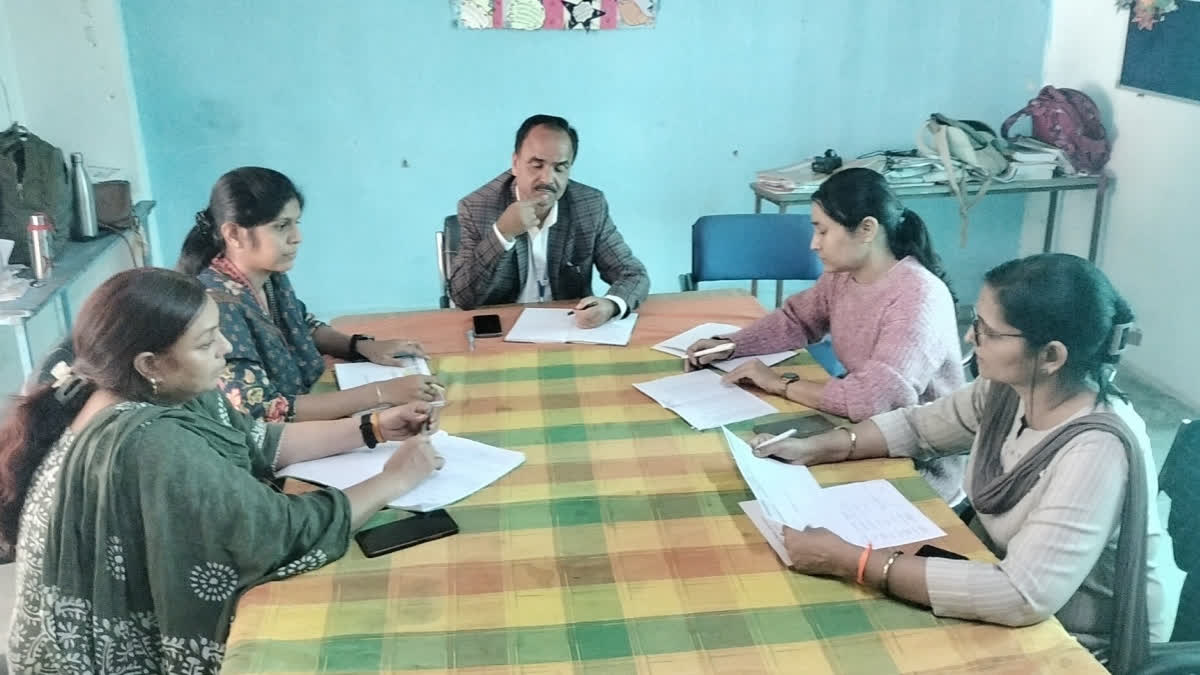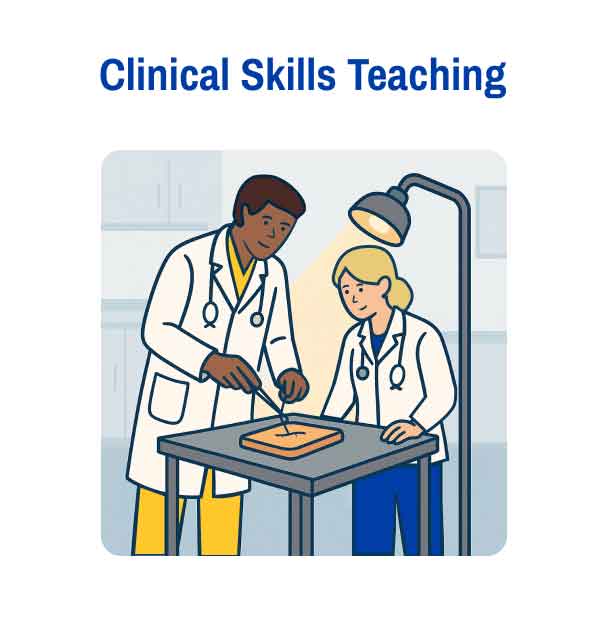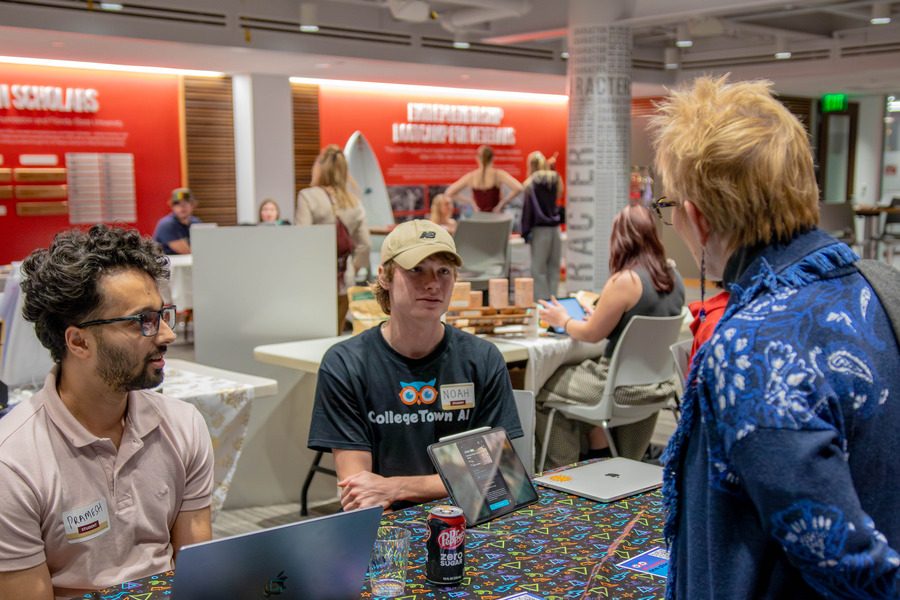Strategies and barriers to implementing physically active teaching in universities from the perspective of lecturers: a qualitative study | BMC Public Health

The sample (10 women and 6 men) consisted of twelve lecturers and four professors. All but one of the respondents worked in teacher training. The age structure of the sample is as follows: 20–29 (n = 1); 30–39 (n = 5); 40–49 (n = 4); 50–59 (n = 5); over 60 (n = 1). Due to the small size of the university (65 professorships, 168 lecturers) and the associated risk of identifying participants, no further personal data were collected or reported.
The identified themes out of the qualitative interviews were categorised into two main areas: Knowledge and use of physically activating measures and teaching methods and barriers to the implementation of physically active university teaching.
Knowledge and application of physically activating measures and teaching methods
The analysis of the introductory question of the semi-structured interview shows that lecturers (still) pay little attention to physical activation or breaks from sitting when planning and carrying out their teaching. Many lecturers are simply not aware of a physically activating-sensitive perspective on their own teaching, as the following quote illustrates.
So, I represent the humanities (laughs) and in this respect, we haven’t actually realised that we should or ought to do something like this. (Int_4, paragraph 8).
It is therefore not surprising that just under half (7 out of 16) of the lecturers were initially unable to name any physically activating measures or teaching methods that they could spontaneously think of to their own teaching.
When looking at measures for physically active university teaching, the results show that only two of the sixteen lecturers stated in the course of the interview that they use physical activity breaks in their teaching to activate, mobilise, strengthen, stretch, or relax. Only one person utilises sit-stand desks in their teaching, which students can use to change their posture during the course.
Overall, it can be stated that more than two-thirds of the lecturers surveyed (11 out of 16 / 68.75%) know and use no or only a few (1–3) physically activating teaching methods (Int_1, Int_2, Int_3, Int_4, Int_5, Int_6, Int_7, Int_11, Int_13). Only two lecturers (Int_12, Int_15) have a broad(er) repertoire of physically activating teaching methods (5 or 7 methods). Table 2 systematically lists the identified physically active teaching methods that were derived from the interview data – that is, they were mentioned by the participants themselves. The method titles used in Table 2 were mostly provided by the lecturers interviewed. Where only a description of a method was given, we formulated a title for the method ourselves based on common designations and added it to the table. The descriptions of the methods in Table 2 are based on the statements of the lecturers, but were formulated in a condensed form by the authors of the study.
The lecturers mainly mentioned teaching methods that incidentally lead to interruptions in sitting during their courses, without being consciously intended. In this context, common teaching methods were identified: moving during group work (12 references), giving a presentation or speech while standing in front of the learning group (4 references), and writing on the blackboard (3 references). All of these methods align with physically activating teaching approaches.
However, the lecturers themselves note that these three typical but unintentional interruptions to sitting during the course either only occur rarely, only lead to physical activity for individual students — and not for the whole seminar group (e. g. during presentations and writing on the blackboard) or the physical activity they generate is very low.
So, the minimum amount of physical activity during group work is that the students stay in their seats and just turn their chairs. (Int_15, paragraph 12).
Thus, the central physically activating teaching method in university courses (group work) often turns out to be just another reason for sitting, which hardly contributes to the interruption of sitting / physical activation. The situation is different when group work is combined with a change of learning location. Four of the lecturers surveyed stated that they occasionally allow students to leave the classroom during group work and temporarily use the stairwell, corridor, courtyard, or neighbouring green spaces as a place to study. The combination of group work and a change of learning location then has a significantly higher potential for physical activity.
Barriers to the implementation of physically activating teaching methods and measures in university teaching
Five sub-themes were identified as barriers to the implementation of physically active teaching. They can be summarised as follows:
-
Uncertainty in implementation: Lack of methodological knowledge / Lack of pedagogical- didactic concept
-
Lack of space: too small rooms / too many students
-
Lack of time: high volume of learning content / precious learning time
-
Students’ unwillingness to move: Physical laziness or pronounced sitting habit?!
-
Organisational social norms: Teaching culture based on sitting / Student expectations
Uncertainty in the implementation of physically activating teaching methods and measures
Most of the university lecturers interviewed have completed a teacher training program. Despite their profound pedagogical-didactic and methodological knowledge, many lecturers stated that, in addition to a lack of knowledge of physically activating methods and measures, they also had uncertainties regarding the pedagogical-didactic and methodological implementation of these in university teaching.
So, I would simply think that my main focus is on teaching the students some didactic content. Partly through lectures, partly by having them deal with tasks themselves and I would find it difficult at first glance because I also have little experience in thinking about how I can now implement this and somehow integrate walking or standing at the same time. (…) In other words, the barriers, to come back to your question, are mainly that I lack a concept of how I can integrate this in a meaningful way without having to accept a loss of content. (Int_10, paragraphs 16–18).
In addition to this general didactic and methodological uncertainty regarding the integration and implementation of physically activating teaching methods and measures, many lecturers emphasised that they consider physical learning approaches to be particularly suitable for younger pupils in schools and that they are not really an appropriate option for adult learners in university teaching.
So, in everyday school life, we often did physical activity with ritualised songs that addressed all areas of the body, especially the shoulders and the similar. I’m not quite sure to what extent you can make that usable for university students without it becoming silly (laughs), you certainly need other methods. (Int_11, paragraph 20).
The uncertainty about implementation, but also the lecturers’ further interest in this topic, was often expressed in the explicit desire for concrete methodological and pedagogical-didactic guidance or further professional development.
Lack of space: mismatch between (too small) room size and (too) large number of participants
Lecturers noted that the physical classroom environment, particularly the lack of space for physically activating activities, made it difficult for them to integrate physically activating methods and measures into their courses. Lecturers reported that this problem was most evident in larger rooms with fixed rows of seats.
However, lecturers also relativised the scope of the specific lecture hall problem as a fundamental obstacle to dynamic university teaching.
“Of course, there are spaces and events where physical activity is not so convenient. Lectures in the lecture hall with rows, that is indeed awkward. But I believe that only affects a small percentage of the teaching one encounters.” (Int_12, paragraph 20).
According to lecturers, the frequent disproportion between the small size of the teaching room and the high number of students attending courses also hinders physical activity. In particular, the lecturers interviewed, who held large courses with a high number of students, emphasised the disproportion between the number of students and the size of the room as a key obstacle to the implementation of physically activating teaching methods and measures in courses.
I think one of the main problems is that the rooms are extremely crowded. We often have the problem that not all students even have a table and chair. And if they do manage to squeeze a chair into a corner somewhere, there’s not much space to move around. So maybe the ones who have found a place on the floor are the ones who are most likely to move (laughs). (Int_11, paragraph 16).
Lecturers of small seminars were much more optimistic in their assessment of the implementation of physically active teaching due to the generally significantly lower number of participants in courses.
Lack of time
The effect of physical activity in reducing learning time was seen as a further barrier to its implementation in teaching. Against the backdrop of a high density of teaching content, the lecturers reported their concern that they would no longer be able to teach the subject matter in the scheduled time if learning time was lost due to physical activity. For the lecturers, this concern about loss of time due to physical activation related primarily to the classic 90-min course format. For double-hour courses or block courses, on the other hand, they saw much more favourable opportunities to integrate physical activity measures and teaching methods into their course concept in terms of time.
And what I haven’t done yet is a block course. I think that could be designed much better or somehow incorporate physically activating methods, because of course, you have to keep changing the teaching format when you sit together for eight hours. And I think there’s more opportunity to do that than in 90 min, which, depending on what you want to do thematically, is not as long as it might sound now. (Int_1, paragraph 22).
The lecturers also made a connection with the problem of “lack of space”, which can delay the timing of physically activating teaching methods and measures and thus exacerbate the time problem:
If I’m in a compulsory course where all our student teachers have to sit through once, then the seminar is 40 to 45 people in a room designed for 30 to 35 people. Then of course it’s difficult if the students don’t all have a seat and have to sit in the second row at the back. Then you also save yourself a bit of movement, because then you know, OK, now it’s full of confusion until someone is in another position, which means that the 90 min are wasted again. (Int_1, paragraph 24).
However, not all the lecturers shared the previously outlined view of physically activating measures and teaching methods as reducing learning time. Two lecturers explicitly stated that they did not recognise a time problem in the implementation of physically activity in teaching:
Otherwise, I wouldn’t see so many barriers, maybe even none at all. Of course, you can always say that it takes time away from me because the students have to find each other first and then it’s more restless or something. On the other hand, it’s also an illusion to believe that they’re always attentive just because they’re sitting down (laughs). (Int_12, paragraph 20).
Students’ unwillingness to move
Five of the sixteen lecturers interviewed reported that they had already experienced that students were sometimes reluctant to engage in such physical activations when setting physically activating impulses as part of their courses. The lecturers perceived this as an obstacle to the implementation of physically activating methods and measures, which they said had also prevented them from implementing further impulses of physical activity in the past.
This reluctance to move on the part of students is observed by lecturers not only when using (large) methods of physical activation with larger impulses of physical activity (e.g. excursions), but also with small activations, such as the frequently used group work (Int_16, paragraph 16).
I’ve noticed that when I say: “Now please form groups” and I tell four students to sit together, all four of them start to say: “Oh, the others should come here. So, they really don’t want to move. And, basically, it’s already happened to me, in a huge room, I’ve had two or three groups that were very close together and who kept disturbing each other during group work and I then said: “Yes, but the room is so big, you can get up and go there.” And then they’d say: “Oh, no, no, we’d rather stay here” or something like that. I’ve already observed that. (Int_7, paragraph 36).
Some lecturers try to counter this reluctance to move with methodological variation:
I think there is always the moment when you want to get a group that is sitting down moving, the hurdle is great. That always has to be done methodically and you also notice, or I notice when I say: “Mix and mingle”, then the students stay where they are. They just turn their chair round. The least I sometimes say is: “Now go with someone you haven’t spoken to yet this semester.” Then I don’t know how they do it, but at least a few more students move around. (Int_15, paragraph 22).
Other lecturers see the barrier less in a fundamental unwillingness to be physically active on the part of the students, but rather in a pronounced habit of sitting during courses, which becomes more habituated over the course of the program.
Whether a general reluctance to be physically active or have an acquired habit of sitting, the role of a physical animator that falls to them represents a significant obstacle to realisation.
Sometimes, I have to say, the reaction of the students really put me off: “Oh, now we have to do it again”. This prescriptiveness is a barrier for me. (Int_13, paragraph 26).
Organisational social norms
The perception of what was considered “normal” practice and behaviour in university teaching influenced the willingness and feasibility of teaching with physical activation. Half (n = 8) of the lecturers reported a teaching culture that did not support regular stimuli of physical activity. They noted that concerns about being seen as “weird” or feeling uncomfortable prevented them from integrating physically activating teaching methods and measures more strongly into their courses, as sitting was simply the norm in university teaching.
If it were common practice [to integrate physical activity impulses into teaching; author’s note], then it wouldn’t be so difficult to initiate. If everyone did it and the students were used to it and found it normal, then there would no longer be a barrier. (Int_8, paragraph 40).
It was also reported that such physical activity-impeding normative concepts were already biographically characterised in lecturers during their own studies and that these still had an effect in their current role as lecturers.
You just sit in a seminar or lecture. I couldn’t have imagined simply standing up in a lecture as a student. I have to say that even as a lecturer, it would be strange for someone to stand up all of a sudden. Why would he do that? (laughing) I wouldn’t do that myself. (Int_3, paragraph 48).
Lecturers also reported several times that they were worried about making a fool of themselves in front of the students by using physically activating impulses in teaching, or that they would need explanation because this could violate the established sitting expectations of the students.
How you can somehow integrate physical activity in a meaningful way so that it would actually be perceived as a variety and that I’m not somehow in need of explanation to the students, because that might actually be the second barrier. So, A, I don’t really have an idea of how I can implement it, but B, I would also think that the students would perceive it more as actionism. I don’t know if that’s actually the case, but I could imagine it. (Int_10, paragraphs 19–20).
In this context, one lecturer suggested carrying out physically activating methods and measures primarily in the lower semesters, as students’ expectations of sitting are not yet so pronounced here.
link







